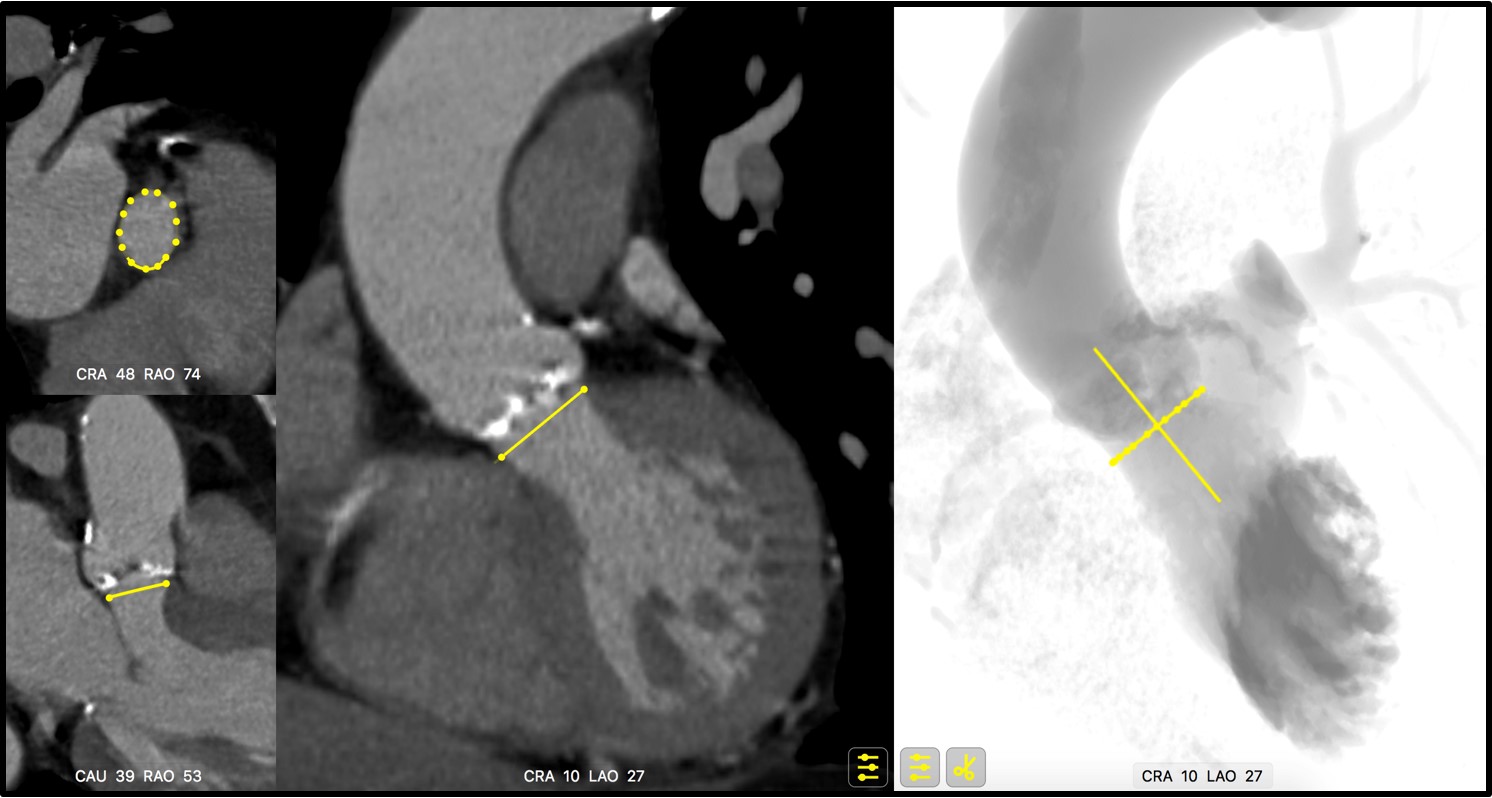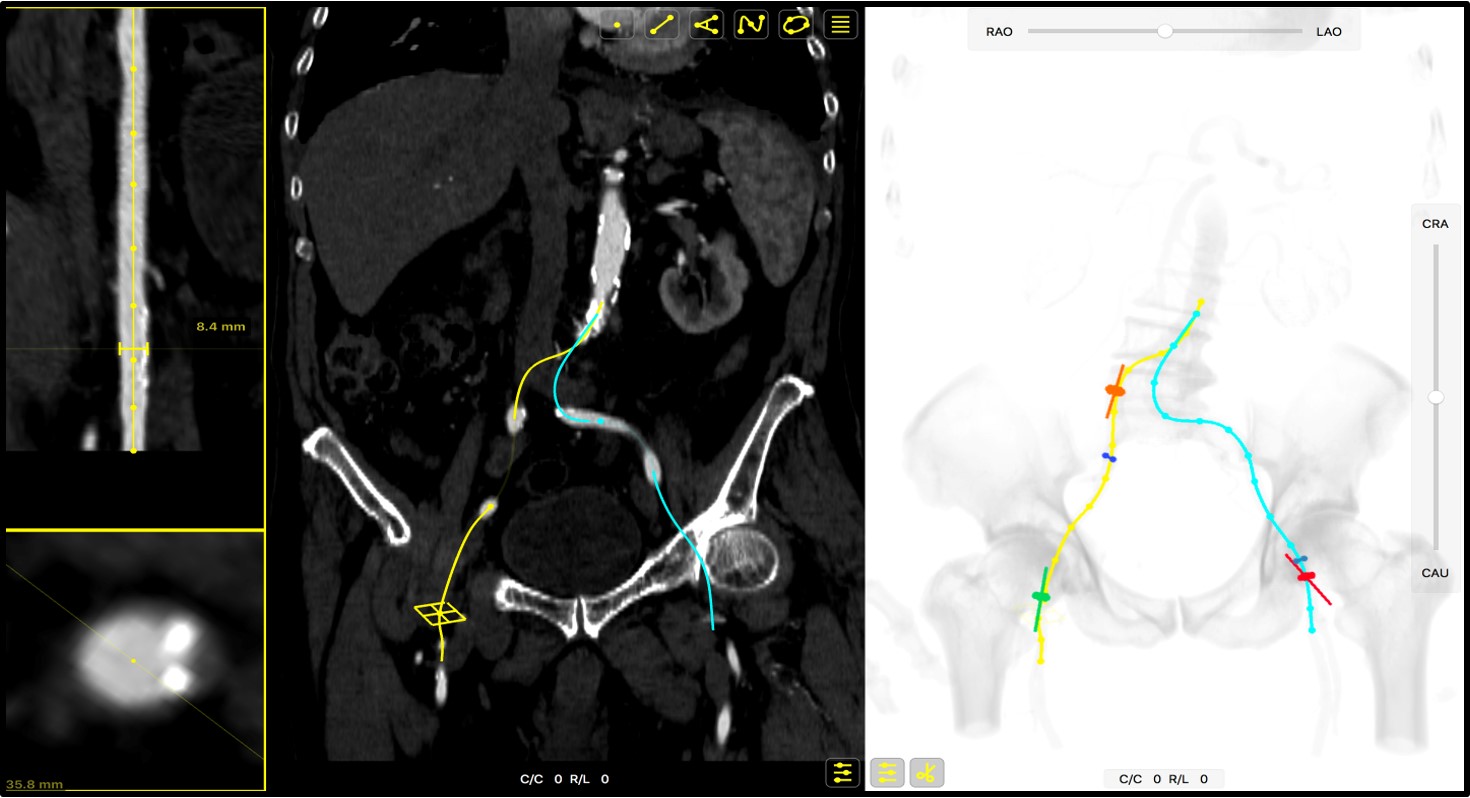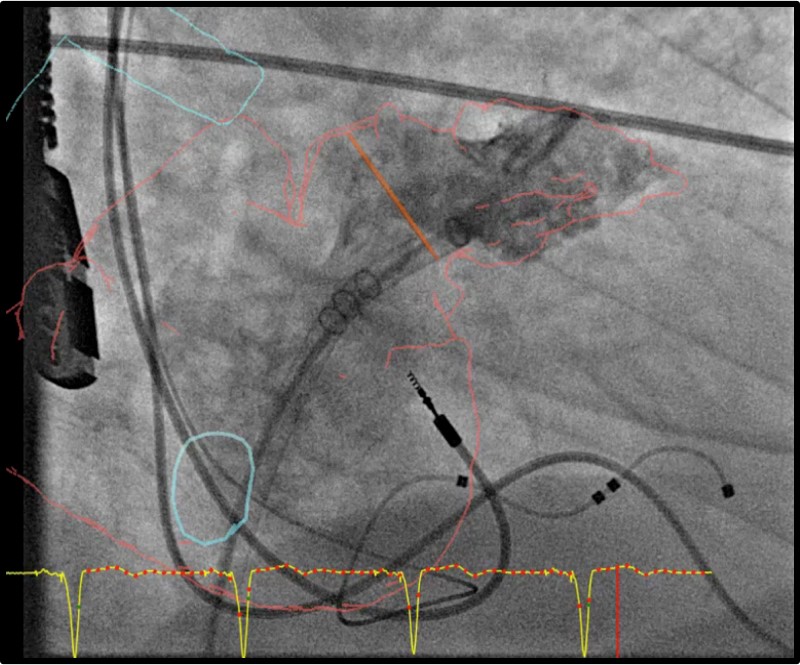The Expanding Role of CT in Pre-Procedural Planning of Percutaneous Structural Heart Disease Interventions
Technological innovation is the foundation that entailed the growth of transcatheter interventions. The expansion of percutaneous interventions was also made possible through accurate patient selection, pre-procedural planning, and intra-procedural guidance. Cardiac computed tomography (CT) is increasingly being used for these objectives, providing a roadmap of anatomy and identifying potential procedural hurdles. Advantages of CT include good spatial resolution, wide field of view, and three-dimensional (3D) multiplanar reconstruction capabilities. In this review, in a question and answer format, we discuss the pivotal role of cardiac CT in the evaluation of patients undergoing percutaneous cardiovascular interventions.
How Has the Use of Cardiac CT for Structural Heart Disease Interventions Evolved in the Past Few Years?
In the early transcatheter aortic valve replacement (TAVR) era, CT was being used mainly for the assessment of vascular access including iliofemoral arteries. In the past decade, however, CT has significantly expanded to other aspects of TAVR procedural planning. First, the appreciation that echocardiographic two-dimensional (2D) measurements could over- or underestimate the aortic annulus dimensions has established contrast-enhanced, cardiac-gated CT angiography as the gold standard for pre-TAVR procedural planning for annular measurement and device sizing (Figure 1).1,2 CT also provides additional value on aortic valve leaflet morphology, degree of leaflet calcification, aortic root angulation, and size and degree of calcification of the arterial access site (Figure 2). Finally, CT determines the optimal fluoroscopic implantation projection for transcatheter therapies.3
Figure 1
Figure 2
In addition to its utility in pre-TAVR planning, CT scan is increasingly being used in pre-planning of left atrial appendage (LAA) closure to assess LAA anatomy. CT can also be used to plan transcatheter mitral valve interventions for, among others, evaluation of mitral annular calcification, mitral valve annulus dimensions, and papillary muscle anatomy.
In This New Era of Advanced Imaging Modalities, Has Echocardiography Become Obsolete?
Echocardiography and CT have their inherent individual strengths and have complementary roles in transcatheter interventions. Echocardiography is often the initial imaging modality to evaluate structural heart disease, and CT is an essential technology for pre-planning of interventions, specifically TAVR, LAA, and paravalvular leak closures. As more TAVR procedures are performed without the need for general anesthesia, transthoracic echocardiography (TTE) is increasingly being used in lieu of transesophageal echocardiography (TEE) for intra- and post-procedural TAVR evaluation. Nevertheless, TEE remains the main imaging modality in complex TAVR procedures and for intraprocedural assistance of LAA closure and mitral valve repair procedures.
Do the Appropriateness Guidelines Reflect This Change in Practice?
The American College of Cardiology and its professional partners have recently developed the 2017 Appropriate Use Criteria for Multimodality Imaging in Valvular Heart Disease.4 This document reflects changes in utilization of multimodality imaging in the context of its rapidly developing technical and clinical applications. With the increasing use of transcatheter procedures, multimodality imaging has now become even more important to determine eligibility, pre-interventional planning, and peri-procedural guidance.
Given This Expanding Role of Advanced Imaging, Will Future Structural Interventionalists Need to Obtain Expertise in Different Imaging Modalities?
Interventionalists have traditionally relied upon fluoroscopic imaging for transcatheter interventions. Percutaneous structural heart interventions, however, require the use of additional imaging modalities such as echocardiography and CT for pre-, intra-, and post-procedural guidance. Hence, the structural interventional cardiologist should have a good understanding of the strengths and weaknesses of the various imaging modalities and be able to readily interpret fluoroscopic, CT, TTE, and TEE images, integrating their assessment of cardiac anatomy through all imaging modalities. With the development of numerous devices for the treatment of structural heart disease and substantial growth in this field, interventional imaging might become an important and well-defined sub-specialty.5
What is the Future Role of CT in Percutaneous Cardiovascular Interventions?
Structural heart disease interventions have commonly been performed under fluoroscopic guidance. However, fluoroscopy has poor characterization of soft tissue and provides only 2D projections of complex 3D anatomy, hence lacking the spatial information necessary for complex interventional procedures. The integration of CT with fluoroscopy in the catheterization laboratory can provide the 3D information necessary for improved accuracy and safety in planning and guiding these interventions, while reducing radiation exposure, contrast volume, and procedural duration (Figure 3).
Figure 3
There is significant potential in the field of fusion imaging for structural heart disease interventions. The newer imaging systems enable advanced 3D imaging with rotational angiography, which uses a quick spin around the patient to create a CT-like 3D image of the anatomy. The shortcoming of the current CT and fluoroscopy fusion imaging is, however, the inability of the live fusion.5 To summarize, CT is widely being adopted as the standard of care in pre-planning percutaneous interventions and will likely have an even more significant impact on patient care in the years to come.
References
- Jilaihawi H, Kashif M, Fontana G, et al. Cross-sectional computed tomographic assessment improves accuracy of aortic annular sizing for transcatheter aortic valve replacement and reduces the incidence of paravalvular aortic regurgitation. J Am Coll Cardiol 2012;59:1275-86.
- Vaquerizo B, Spaziano M, Alali J, et al. Three-dimensional echocardiography vs. computed tomography for transcatheter aortic valve replacement sizing. Eur Heart J Cardiovasc Imaging 2016;17:15-23.
- Spaziano M, Thériault-Lauzier P, Meti N, et al. Optimal fluoroscopic viewing angles of left-sided heart structures in patients with aortic stenosis and mitral regurgitation based on multislice computed tomography. J Cardiovasc Comput Tomogr 2016;10:162-72.
- Doherty JU, Kort S, Mehran R, et al. ACC/AATS/AHA/ASE/ASNC/HRS/SCAI/SCCT/SCMR/STS 2017 Appropriate Use Criteria for Multimodality Imaging in Valvular Heart Disease: A Report of the American College of Cardiology Appropriate Use Criteria Task Force, American Association for Thoracic Surgery, American Heart Association, American Society of Echocardiography, American Society of Nuclear Cardiology, Heart Rhythm Society, Society for Cardiovascular Angiography and Interventions, Society of Cardiovascular Computed Tomography, Society for Cardiovascular Magnetic Resonance, and Society of Thoracic Surgeons. J Am Soc Echocardiogr 2018;31:381-404.
- Wiley BM, Eleid MF, Thaden JJ. Fusion Imaging for Procedural Guidance. Rev Esp Cardiol (Engl Ed) 2017;71:373-81.
Keywords: Transcatheter Aortic Valve Replacement, Aortic Valve, Echocardiography, Transesophageal, Mitral Valve, Imaging, Three-Dimensional, Papillary Muscles, Patient Selection, Inventions, Atrial Appendage, Angiography, Standard of Care, Heart Valve Diseases, Echocardiography, Multimodal Imaging, Fluoroscopy, Arteries, Patient Care, Catheterization, Anesthesia, General, Diagnostic Imaging
< Back to Listings



